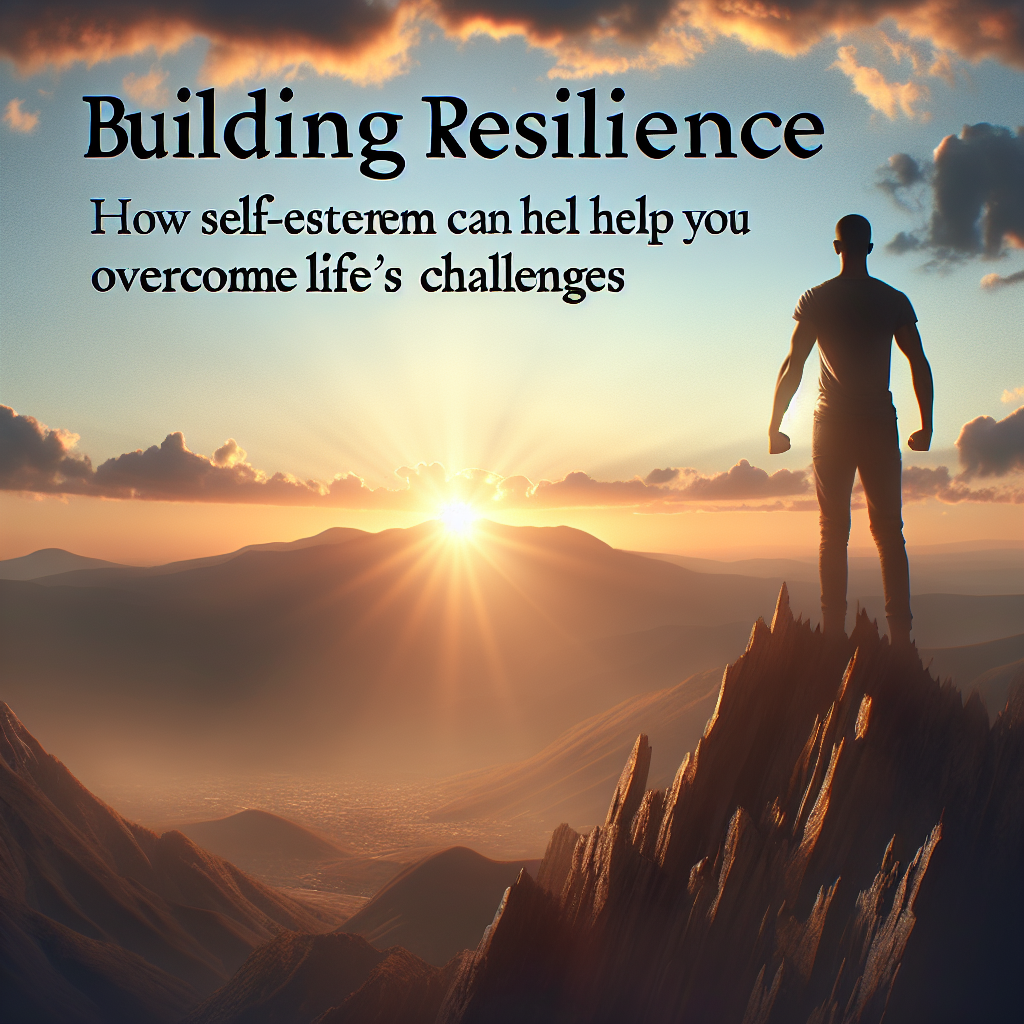
Introduction
Imagine standing at the base of a towering mountain, the summit obscured by swirling clouds. The challenges you face in life can feel just like that mountain: daunting, unpredictable, and at times, insurmountable. But what if I told you that within you lies a powerful tool that can help you scale that mountain and emerge even stronger? Building resilience: how self-esteem can help you overcome life’s challenges is not just a psychological concept; it’s an essential life skill that can significantly impact your journey through adversity. In this article, we will explore the vital connection between self-esteem and resilience, providing you with actionable insights, case studies, and practical strategies to bolster your self-worth so you can rise above life’s hurdles.
Understanding the Concepts
What is Resilience?
Resilience is the ability to bounce back from adversity, tackle challenges, and adapt to difficult situations. It’s not about avoiding stress but rather how we manage and respond to it. Individuals with high resilience often view challenges as opportunities for growth rather than insurmountable obstacles.
The Role of Self-Esteem
Self-esteem refers to an individual’s sense of self-worth and personal value. People with healthy self-esteem believe in their capabilities and view themselves positively. This belief acts as a bedrock during tough times, enabling individuals to navigate life’s adversities with greater confidence and clarity.
The Connection Between Self-Esteem and Resilience
The interplay between self-esteem and resilience is pivotal when it comes to overcoming challenges. Research has shown that individuals with high self-esteem are more likely to cope effectively with stress and maintain a positive outlook, enabling them to persevere where others might falter. Thus, building resilience: how self-esteem can help you overcome life’s challenges becomes a key focus for personal development.
Building Blocks of Resilience and Self-Esteem
1. Cultivating a Positive Mindset
Positivity acts as a catalyst for resilience. By fostering an optimistic outlook, you can change the way you perceive challenges. Here are some strategies to nurture a positive mindset:
- Mindfulness Practices: Engaging in mindfulness exercises, such as meditation or deep-breathing techniques, can help shift your focus away from negative thoughts.
- Gratitude Journaling: Keeping a daily gratitude journal allows you to reflect on positive experiences, reinforcing a sense of appreciation for life—even amid difficulties.
2. Setting Achievable Goals
Goal-setting provides direction and a sense of accomplishment. Setting small, achievable goals can enhance your self-esteem and, by extension, your resilience. Here’s how to do it:
| Step | Action |
|---|---|
| 1 | Identify a challenge in your life. |
| 2 | Break it down into smaller, manageable goals. |
| 3 | Celebrate each small victory to reinforce your self-worth. |
3. Surrounding Yourself with Supportive People
Social support is crucial in times of hardship. Engaging with supportive friends, family members, or mentors can help you feel valued and understood. Their encouragement fosters self-esteem and provides a buffer against stress.
4. Embracing Failure as a Learning Opportunity
Failures are not the end but rather an integral part of growth. People with high self-esteem tend to view failures as learning experiences, which contributes to their resilience. Reframing your mindset around failure can help build confidence:
- Reflection: Analyze what went wrong without harsh self-criticism.
- Learning Points: Identify lessons that can be applied in the future.
Case Studies
Case Study 1: The Athlete’s Journey
Consider professional athlete Serena Williams, who has faced numerous setbacks, including injuries and personal challenges. Her strong self-esteem has been crucial in her ability to overcome these hurdles. By viewing challenges as opportunities, she rebuilt her confidence and resilience time and again.
Analysis
Serena’s journey illustrates how a solid sense of self-worth fuels resilience, allowing her to confront and overcome challenges head-on.
Case Study 2: The Corporate Leader
Jack, a CEO of a mid-sized tech company, faced significant market downturns that threatened the stability of his business. His high self-esteem enabled him to navigate through turbulent times by making bold decisions and rallying his team. He reframed failures as stepping stones rather than roadblocks.
Analysis
Jack’s story demonstrates that resilient leaders often possess a strong sense of self-worth, empowering them to innovate and inspire during hardships.
Practical Strategies for Building Resilience Through Self-Esteem
1. Practice Self-Compassion
Treating yourself with kindness during tough times can enhance self-esteem. Here are some ways to practice self-compassion:
- Avoid Negative Self-Talk: Replace critical thoughts with affirming statements.
- Acknowledge Your Feelings: Allow yourself to experience emotions without guilt or shame.
2. Develop Problem-Solving Skills
Resilience thrives when you possess effective problem-solving skills. Approach challenges methodically:
- Identify the problem.
- Generate possible solutions.
- Evaluate and implement a feasible solution.
3. Maintain a Healthy Lifestyle
Physical well-being directly influences mental resilience. Prioritizing sleep, nutrition, and exercise can keep you emotionally balanced. For instance:
| Area | Strategy |
|---|---|
| Sleep | Aim for 7-9 hours per night. |
| Nutrition | Consume balanced meals rich in nutrients. |
| Exercise | Engage in regular physical activity, even if it’s a daily walk. |
Conclusion
Building resilience: how self-esteem can help you overcome life’s challenges is not just about bouncing back; it’s about thriving. By cultivating a positive mindset, setting achievable goals, nurturing supportive relationships, and viewing failures as opportunities, you lay a strong foundation for resilience. Remember, every challenge you face is an opportunity for growth. Embrace it, harness your self-esteem, and scale that mountain ahead with confidence and courage.
FAQs Section
1. How can I improve my self-esteem?
Improving self-esteem often involves practicing self-compassion, setting and achieving small goals, and avoiding negative self-talk. Regularly reminding yourself of your strengths can also help.
2. What are some signs of low resilience?
Signs of low resilience may include chronic stress, difficulty adapting to change, feelings of hopelessness, and a tendency to give up easily.
3. Is building resilience a one-time effort?
No, building resilience is an ongoing process. It requires consistent practice and self-reflection, especially in response to new challenges.
4. Can I develop resilience even if I have a traumatic past?
Yes, many individuals successfully build resilience despite experiencing trauma. Engaging in therapy or support groups can be beneficial.
5. How can I encourage resilience in my children?
To encourage resilience in children, foster a supportive environment, model healthy coping strategies, and encourage them to view challenges as opportunities for growth.
In navigating life’s challenges, self-esteem serves as your unwavering ally. Bolstering it not only prepares you for adversity but also opens the door to a richer, more fulfilling life. So take the first step today—invest in yourself and your journey toward resilience.











